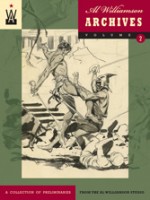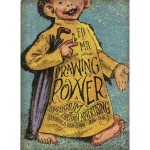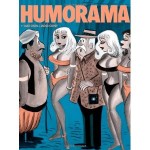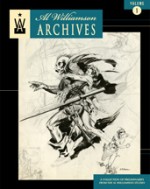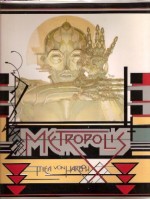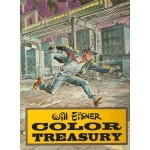
By Blake Bell (Fantagraphics Books)
ISBN: 978-1-60699-166-4
Win’s Christmas Gift Recommendation: 9/10 Perfect for art lovers, Marvel Zombies, wannabe illustrators and lovers of pure comic magic
There’s currently a delightful abundance of beautiful coffee-table art-books/biographies celebrating the too-long ignored founding fathers and lost masters of American comic books, and this fabulous tome highlights the astounding wizardry of one of the most accomplished draughtsmen and yarn-spinners of that incredibly fertile early period.
As always you can save time and trouble by simply buying the book now rather than waste your valuable off-hours reading my blather, but since I’m going to froth on anyway feel free to accompany me as I delineate just why this tome needs to sit on your “favourites†shelf.
This lavishly illustrated, oversized tome traces the tragic life and awe-inspiring body of work of possibly the most technically accomplished artist of the US comicbook industry: a man of privilege and astonishing pedigree (he was a direct descendent and namesake of iconoclastic poet and artist William Blake) haunted by illness, an addictive personality and especially alcoholism, but a man who nevertheless raised a family, shaped an art-form and left twin legacies: an incredible body of superlative stories and art, and, more importantly, broken lives saved by his becoming a dedicated mentor for Alcoholics Anonymous.
William Blake Everett was born in 1917 into a wealthy and prestigious New England family. Bright and precocious he contracted Tuberculosis when he was twelve and whilst recuperating in Arizona began a life-long affair with and battle against booze. For the rest of his chequered life “Wild Bill†vacillated between magnificent artistic highs and heartbreaking personal lows, covered with chilling frankness in this excellent biography, written in conjunction with the artist’s surviving family.
Although telling, even revelatory and concluding in a happy ending of sorts, what this book really celebrates is not the life but the astounding legacy of Bill Everett. A gifted, driven man, he was a born storyteller who had the sheer naked ability to make all his own worlds real; and for nearly five decades his incredible art and wondrous stories, which began in the heydays of the Pulps (see also Spicy Tales Collection) enthralled and inspired successive generations of fellow dreamers.
His beautiful artwork featured in a variety of magazines before his fortuitous stumbling into the right place at the right time secured Everett’s place in history forever with his creation of the first anti-hero in comics.
Yet even before the advent of the mutant hybrid Sub-Mariner who, along with his elemental counterpart The Human Torch, secured the fortunes of the budding Marvel Comics (covered in a fascinating and detailed account which clears up many controversies that have raged amongst fans ands historians for decades) Everett was a valued and admired writer/artist/letterer/designer whose early seminal triumphs are lovingly covered here in many reproduced strip extracts, sketches and an utterly invaluable collection of original art pages.
Bill Everett was a jobbing cartoonist who drifted into the new world of comicbooks: a budding industry that combined his beloved drawing with his other compulsion – making up stories. The first chronological art selection here features a plethora of his compelling and irresistible covers for Amazing Mystery Funnies, Blue Bolt, Target Comics, Amazing-Man Comics, Victory Comics, Heroic Comics, and the landmark Motion Picture Funnies Weekly (for which he produced not only the pre-Marvel/Timely Sub-Mariner, but also the all-important back cover sales pitch) and many designs and roughs for unpublished titles, interspersed with pages and spreads from early creations Amazing-Man, Dirk the Demon, Skyrocket Steele, Music Master, The Chameleon, Hydroman, Sub-Zero and of course Prince Namor.
The early days of Marvel Mystery Comics and the Sub-Mariner’s own feature title are thoroughly represented with many pages of original art starring not only his aquatic antagonist but also The Fin and Human Torch, and this section is also full of delightful sketches from his four years of service in the Army Corps of Engineers.
The industry had changed radically by the time Everett mustered out: superheroes were on the wane and other genres were rising in popularity. Returning as a freelancer to Marvel/Timely, Everett worked again on Sub-Mariner and even created the sexy spin-off Namora and stillborn kid crusader Marvel Boy, but it was with the series Venus that he moved in a new direction: glamorous, glorious horror.
For over a decade he brought a sheen of irresistible quality to the generally second-rate chillers Timely/Atlas/Marvel generated in competition with genre front-runners EC Comics. It’s easy to see how they could compete and even outlive EC, with these lush and lurid examples of the hundreds of stunning covers and chillingly beautiful interior pages selected from such titles as Mystic, Menace, Astonishing, Adventures into Weird Worlds, Uncanny Tales, Suspense, Marvel Tales, Spellbound, Mystery Tales, Men’s Adventures and others. My only quibble is that unlike the companion volume featuring unsung genius Mort Meskin (see From Shadow to Light) there are no complete stories collected in this otherwise perfect primer.
Despite being unacknowledged as a master of terror, this period was probably Everett’s most technically adroit, but he also excelled in the other genre-ghettoes of the period. His ability to freeze manic action and convey tension into a single image made him the perfect choice for lead cover artist in the burgeoning military comics fields as can be seen in examples from Man Comics, Navy Tales, Battlefield, Navy Action, Navy Combat and others.
Everett truly excelled in the lush, stylistic depiction of action and horror themes – as well as the seductive delineation of sexy women, although he was equally effective in less histrionic arenas such as merchandising art, wholesome western, romances, cartoon and Bigfoot comedy styles, represented here by pages and covers from such diverse publications as Marvin the Mouse, Nellie the Nurse, Cracked, Jann of the Jungle, True Secrets, Girl Confessions, Bible Tales For Young Folk, Tales of Justice, Quick Trigger Western, Yellow Claw, Sports Action, Pussycat and so many others.
His final creative period follows his return to Marvel after time in the commercial art world and covers the creation of Daredevil, unsatisfactory runs on the Hulk, Dr. Strange, Sub-Mariner, Rawhide Kid and others as well as his stints inking Jack Kirby, Gene Colan, Ross Andru, Herb Trimpe, Dan Adkins and Barry Windsor Smith, before, clean and sober after decades, he produced a landmark run on his signature Sub-Mariner.
Tragically, decades of smoking and alcohol abuse had taken its toll, and only four years after turning his life around he died of complications arising from heart surgery, just when he seemed on the cusp of a brilliant creative renewal as remarkable as his meteoric rise in the 1930s and 1940s.
Evocatively written by biographer Blake Bell, with dozens of first hand accounts from family, friends and contemporaries; the sad, unjust life of this key figure of comics art is lovingly recounted here with hundreds of artistic examples from school days, army service, commercial and cartoon illustration and many intimate photographs supplementing the treasure trove of comics images. By tracking Everett’s early career as a pulp magazine illustrator, through his pioneering superhero art to the moody masterpieces of the 1950s and the Pop Art comics renaissance of the his later years, Fire and Water offers an opportunity to revel in the mastery of a truly unique pillar of America’s sequential Art establishment.
Most importantly for collectors and art-fans there is a overwhelming abundance of beautiful comics magic; from compelling page layouts, sketches and compositions to bold, vibrant pencils and slick luscious inking, and for we comics cognoscenti, the jackpot of never-before-seen unpublished pages: penciled, inked and camera-ready art-boards, as well as illustrations, family pieces and examples of his non-comics career
Brilliant, captivating, and utterly unmissable, this is the book Bill Everett deserves – and so do you.
© 2010 Fantagraphics Books. Text © 2010 Stephen Brower. All art © its respective owners and holders. All rights reserved.
